
PERSECUTIONS MAINLY from the ones, who COPIED & DISTORTED the Hellenic History & Mythology-Cosmology..(i.e: Dionysus Birth to..Jesus..Deukalion..to..Noak..etc – Both “Old” & ” New” ..Testament etc) – Just check the MUSEUMS around the world , Philosophy, Astronomy, Coins, Sculptures, Drama, Architecture, Poetry and some BASIC Education by NOT ignoring facts..
But there is no reason to persistently remove value from the symbolism of our ancestors, insisting passionately on random interpretations that some utterly unscrupulous, they brutally underestimated this exquisite sacred symbolism.
Tying the fingers together and tightening the opponent was painful in the fight and deadly in the war.
Plato himself was a wrestler and, of course, a master of the Meander hand.
Because of the loss of these vessels and the ignorance of Meander’s utility, for thousands of years, we have changed the world of bodybuilding, lost power, gained weight, and become ill.
With the training of Meandros and the diet of Hippocrates, all young people today can build an enameled body and have excellent health.

And the older ones, too, have a lot to gain from reading this book.
The obvious relation between the decorative meander and the meander handle can also be easily seen in the Peelas and Thetis complex [5] where the value of this handle in the center of the play is exaggerated wreathed around the now-formed meander symbolism. It should also not be a coincidence that a multitude of paintings that imply divine defeat, or excessive heroism, are often crowned with a meander!
Maiandros_FILIPPOYWe therefore conclude that the widespread proliferation of the above meander symbolism is by no means accidental. It was a timeless gift of the mythological times, in the classical and modern times of the Mediterranean descendants of the Greeks. A magnificent schematic slogan, the obligation to subjugate the ruling “gods”, hierarchies and religions.
From the multitude of ancient Hellenic vernacular representations, it is clear that this grip, the chisel grip or chisel, or whatever it was called in the past, was perhaps the most celebrated emblem of the god-warriors! The grand schematic slogan that the gods too are defeated!
So Meander was probably the graphic representation of divine defeat by angry heroes!
Picture: Peleus pays Thetis with the “meanders hand or chrome handle”! Interior of a reddish cupola dating to around 500 BC. D. Berlin Museum.
- Kalopoulos
2)
ΧΕΙΡΩΝΙΟΣ ΛΑΒΗ – ΛΑΒΗ ΤΩΝ ΘΕΟΜΑΧΩΝ! “CHEIRONIOS LAVI” or CHEIRONIAN CATCH – “LAVI TON THEOMACHON”!= GODSFIGHTERS(=FIGHTERS v.s GODS!)
P.S: Theo = God / Mache=battle,fight ex: ANDROMACHE (= man fighter); one of the daughters of Priamos of Troy)
Amphibiotics Euphoriatric & Calisthenics
Amphibiotics is the ultimate Holistic concept based on both on Earth , Water & Air exescises. inluding Hydro-QiGong & Martial Arts. Mainly: Calisthenics, Hydrobics – Hydro(=water) gymnastics alias“Hydrobics” (inverted by Konstantin Schönros in 1993) Etymologicaly the word means..AMPHI prep. (=Both places, Round.) ex: Amphitheatre(Amphi= round+theatron, αμφι+βιος-(Amphi+Bios)=AMPHIBIAN = the one who can live both in the water & land, like frogs) etc.
PERSECUTIONS MAINLY from the ones, who COPIED & DISTORTED the Hellenic History & Mythology-Cosmology..(i.e: Dionysus Birth to..Jesus..Deukalion..to..Noak..etc – Both “Old” & ” New” ..Testament etc) – Just check the MUSEUMS around the world , Philosophy, Astronomy, Coins, Sculptures, Drama, Architecture, Poetry and some BASIC Education by NOT ignoring facts..
But there is no reason to persistently remove value from the symbolism of our ancestors, insisting passionately on random interpretations that some utterly unscrupulous, they brutally underestimated this exquisite sacred symbolism.
Tying the fingers together and tightening the opponent was painful in the fight and deadly in the war.
Plato himself was a wrestler and, of course, a master of the Meander hand.
Because of the loss of these vessels and the ignorance of Meander’s utility, for thousands of years, we have changed the world of bodybuilding, lost power, gained weight, and become ill.
With the training of Meandros and the diet of Hippocrates, all young people today can build an enameled body and have excellent health.
And the older ones, too, have a lot to gain from reading this book.
The obvious relation between the decorative meander and the meander handle can also be easily seen in the Peelas and Thetis complex [5] where the value of this handle in the center of the play is exaggerated wreathed around the now-formed meander symbolism. It should also not be a coincidence that a multitude of paintings that imply divine defeat, or excessive heroism, are often crowned with a meander!
Maiandros_FILIPPOYWe therefore conclude that the widespread proliferation of the above meander symbolism is by no means accidental. It was a timeless gift of the mythological times, in the classical and modern times of the Mediterranean descendants of the Greeks. A magnificent schematic slogan, the obligation to subjugate the ruling “gods”, hierarchies and religions.
From the multitude of ancient Hellenic vernacular representations, it is clear that this grip, the chisel grip or chisel, or whatever it was called in the past, was perhaps the most celebrated emblem of the god-warriors! The grand schematic slogan that the gods too are defeated!
So Meander was probably the graphic representation of divine defeat by angry heroes!
Picture: Peleus pays Thetis with the “meanders hand or chrome handle”! Interior of a reddish cupola dating to around 500 BC. D. Berlin Museum.
- Kalopoulos
2)
ΧΕΙΡΩΝΙΟΣ ΛΑΒΗ – ΛΑΒΗ ΤΩΝ ΘΕΟΜΑΧΩΝ! “CHEIRONIOS LAVI” or CHEIRONIAN CATCH – “LAVI TON THEOMACHON”!= GODSFIGHTERS(=FIGHTERS v.s GODS!)
P.S: Theo = God / Mache=battle,fight ex: ANDROMACHE (= man fighter); one of the daughters of Priamos of Troy)
By exercising the Meander in Calisthenics and nutrition of Hippocrates, all young people today can make statues quo body and have excellent physical & mental health.

HYDRO – CALISTHENICS – AERIAL
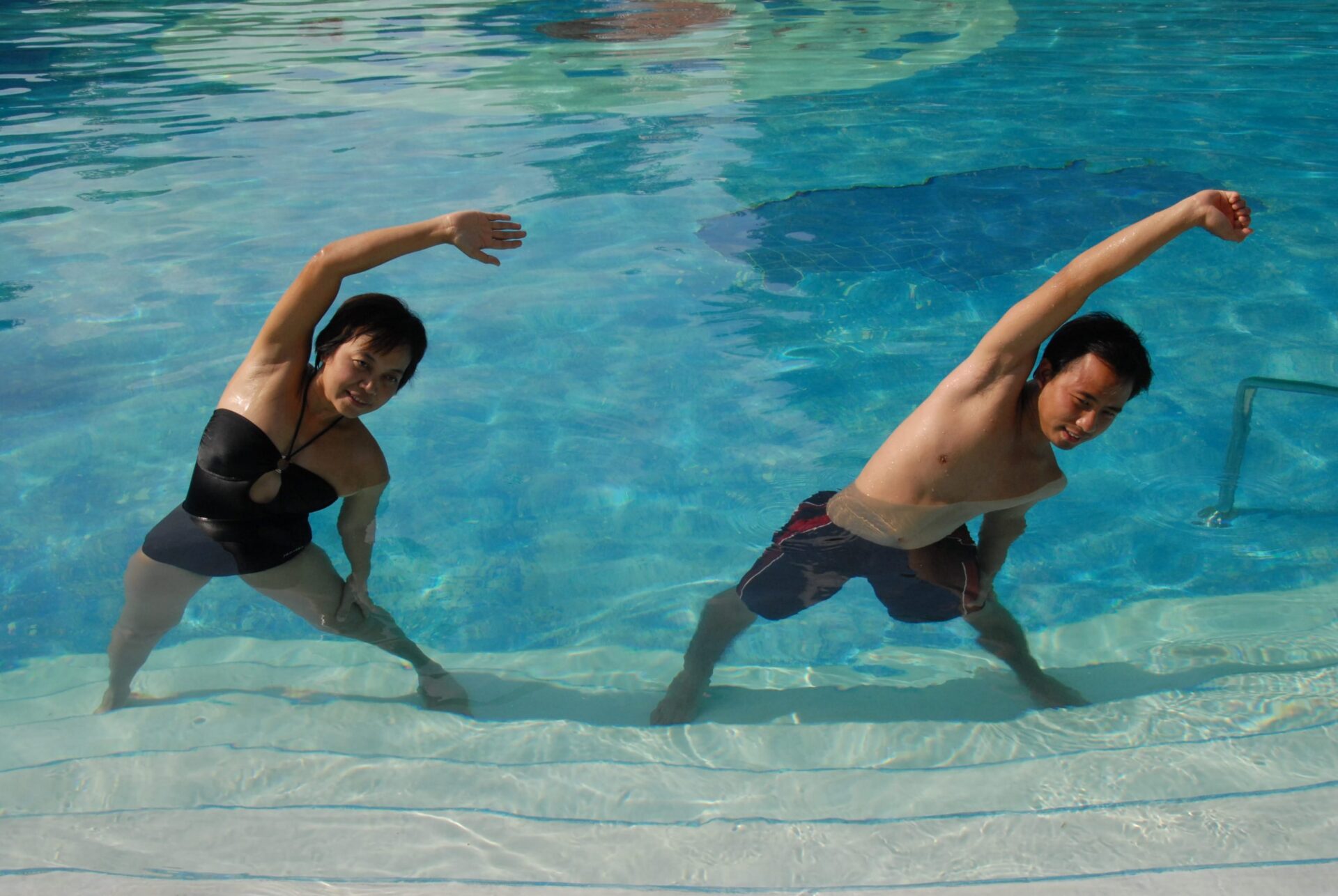
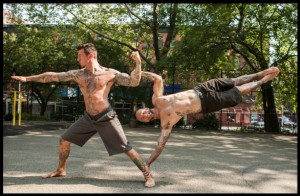


” In all there is inherently something divine. ”
~ Aristotle (384-322 BC)
Why “Euphoriatric”?
The word is made up the prefix “ευ” meaning “well”, the verb “phoro” (“φορω” = I carry..i.e: metaphoric etc) and “iatric” (“ιατρικη”=medical)
The site is NOT Only about The Gastronomical Healthy Life but also the holistic way of living which includes the Following: Education, Culture, by Physical, Mental & Spiritual practices, as:(Gymnastics & Athletics), Philosophy, All Fine Arts(=:Sculpture, Architecture, Music, Poetry, Theater), Medicine, Physics, Astronomy, Mathematics, Etymology, (as a clue to analyze words & improve real historical facts), Literaure(=λογοτεχνία), Lectures, Beauty, inspiration Sourses & Traveling is the main line of our mission in combination with our sugested remendies, training (both external & inner exercises – reverse breathing, meditation etc). All this knowledge & Information is NOT for commercial purposes!
http://www.acrobaticacademy.gr/
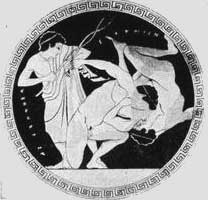
The word calisthenics comes from the ancient Greek words kálos (κάλος), which means “beauty”, and sthénos (σθένος), meaning “strength” or “vigor”.It is the art of using one’s body weight and qualities of inertia as a means to develop one’s physique.
The exercise was named after one of its earliest promotors, the historian Callisthenes.
The opening of the Olympic Games began with a four horse chariot race.

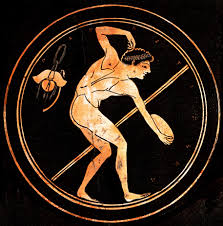
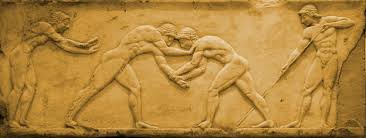
Calisthenics was the main training for all athlets, who partipated in the OLYMPIC GAMES.The first official recorded celebration of the Olympic Games in ancient times was in Olympia at 776 BC 
But this was the 28th Olympiad! This emerges from a copper engraving album “Ifitos disc” as he calls him Pausanias (Solar A 5.20.1) which he saw himself in ancient Olympia. The disc is written royal names of the king of Elis Ifitos king Lycurgus of Sparta and the king of Pisa Kleosthenes, who agreed on the sacred peace “sacred truce” between them. This agreement defines accurately the true inaugural date, postponing the start of the sacred Olympics in Holy Altin Olympia in 108 years earlier! The actual starting date is, if known to us date 776 BC add 108 years, ie 27 more Olympiads for which we know almost nothing, since it has been demonstrated for these written records. Thus we arrive at the beginning of Holy Games of Peace, that the original Olympics in the year -884! So, from then until now have spent 2898 years!
It is only natural that coinage would be struck to commemorate this important religious, political, artistic, and athletic event.
.From 776 BC and after the Games, slowly became more important throughout ancient Greece, reaching their zenith in the fifth and sixth century BC The Olympics also had religious significance since in honor of the god Zeus, whose huge statue stood at Olympia. The number of competitions was twenty celebration was held in the course of a few days. The winners of the games were admired and become immortal through poems and statues. The prize for the winners was a wreath of olive branches.
Another rare silver stater of Olympia is thought to have been struck in 352 B.C., thus for the 107th Olympiad. It displays an artistic rendering of Zeus on ...

The Games gradually lost its importance when the Romans conquered Greece and when Christianity became the official religion of the Roman Empire, the Olympic longer regarded as a pagan celebration, and in 393 AD Emperor Theodosius banned their conduct. In this way over a period of one thousand years during which the Olympic subsequently held every four years.
Museum replica of a bronze discus inscribed as a votive offering to Zeus by Asklepiades of Corinth, winner of the pentathlon in the 255th Olympiad (Glyptothek Munich, original in theArchaeological Museum of Olympia)



Bodyweight calisthenics
…are exercises that use the practitioner’s own bodyweight as resistance.
Resistance within the context of strength training simply means stressing a muscle with a load or training it to move against a force. When using free weights, the load comes from the weight of a dumbbell or a barbell; in bodyweight calisthenics, the load is the practitioner’s own weight. Authentic oldschool bodyweight calisthenics develops real strength. They are of different variety from those you see in a typical Physical Education class.
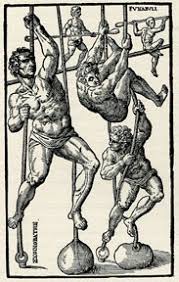
In 480 BC, Anaxilas, tyrant of Rhegium, won the mule event, and this tetradrachm was struck in commemoration
n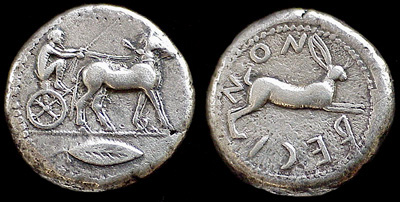
According to the account, a spy of the god-king Xerxessaw the Spartan army of King Leonidas practicing naked calisthenics. The Greek geographer and travellerPausanias also observed that the athletes of the original Olympic Games (776 B.C.),were also trained in calisthenics. The art and tradition of bodyweight calisthenics continued in Roman gladiator camps as noted by the historian Livy.
The benefits of calisthenics are manifold. Correctly practicing calisthenics can help you achieve strength levels which can only be described as superhuman. In addition, strength training can help you tone your body and turn your body into a fat burning machine since it requires a lot of energy to perform some of the more advanced calisthenics exercises such as pistol squats, one arm pull ups or hand stand push-ups. Calisthenics also train your coordination and balancing skills and can help you develop strong joints and ligaments which reduce the risk of injury while doing all sorts of sports.
Below: Two athletes competing in the pankration. Panathenaic amphora, made in Athens in 332-331 BC, during the archonship of Niketes (= Winers from NIKH – in English:NIKE = Victory/Ex: Thessaloniki, Nikolaos the people`s winner = The victory of Thessaly). From Capua.

Patience is King!
As anything which is worth achieving in life, becoming a master in calisthenics does not happen overnight. It can take months or even years, depending on your overall fitness level, to progress from the most basic exercises (e.g. wall push-ups) to the most advanced exercises (e.g. one arm push-ups). However, even if you already have some experience concerning fitness and working out in general, if you have never trained in calisthenics before you should start with the basic exercises before attempting to try many of the exercises you see people performing in dozens of videos when you type the word calisthenics in YouTube’s search bar. Why, you ask? Well, because it is imperative that you progressively develop the strength you will require and slowly condition your joints, tendons, ligaments and muscles to the stress which will be placed upon them by the more advanced exercises. If you rush things, the only results you will get will be frustration, disappointment and failure, and you will also risk causing permanent damage through injury. So, please be patient and let your body take the time it requires to adjust itself to the new challenges you present to it. Being patient is not always easy but there are thousands of things you can do while you wait for your body to recover from training session to training session, and your body will be thankful!

(https://www.google.se/search?q=ancient+greek+calisthenics&rlz=1C1CHNG_svSE362&espv=2&biw=1344&bih=748&tbm=isch&tbo=u&source=univ&sa=X&ei=udc9VY–LceZsAHQ2oHYAw&ved=0CDYQsAQ
https://www.youtube.com/watch?v=9Myq_XTL1Es
http://spartan-bodies.com/

Pankration (// or //)(Greek : Παγκράτιο) was a sporting event introduced into the Greek Olympic Games in 776 BC and founded as a blend of boxing and wrestling but with scarcely any rules. The only things not acceptable were biting and gouging of the opponent’s eyes. The term comes from the Greek παγκράτιον [paŋkrátion], literally meaning “all of might” from πᾶν (pan-) “all” and κράτος (kratos) “strength, might, power”.



Detail pankration scene on Attic red-figure cup, vase of 490-80 BC The pankratiasts to the right trying to pull the eyes of his opponent. The referee is ready to knock him for that foul.

The Pankration sport combining wrestling and boxing without straps, was introduced at the Olympic Games at the 33rd Olympiad (648 BC). It was spectacular and popular but dangerous sport after resulted many times as the death of one of his opponents. For this reason the Olympics after 200 BC and introduced a less violent contest the “Pankration boys” for young boys.
The Pankration athletes who were called pankratiasts combined blow and the handle. Common techniques were those that today would translate as handles dislocation points such as the neck, shoulder, etc. The kicks and the use of the fist attack was the method that was based heavily on power. For this reason, the Pankration was a case of heavier and more powerful athletes. In fact there were only three rules:
Competitors were not entitled to make each other’s eyes, to bite each other or to hit the sensitive area.
There were two kinds of pankration:
One was conducted in an upright attitude and was less dangerous, it was called “Upper or orthostadin pankration.”
At the other continued the struggle after the fall of one of his opponents, who thereupon were vulnerable to an opponent’s blows. This species was named “Kato pankration or alindisi”.
Krefgas the Epidamnios & Damoxenos the SyrakousiosTo pankration was hard event. The pagkratistes Krefgas the Epidamnios, and Syracuse Damoxenos agreed after a long fight with no winner, knocking each other, which would remain erect and motionless. The Krefgas Damoxeno hit him in the head, without dangerous consequences. The Damoxenos, Krefga hit him in the side with outstretched fingers, pierced the bowels, and uprooted with his hands. The Krefgas died immediately (Pausanias, Periegesis).
According to mythology, the sport has been invented by the heroes Theseus and Hercules as a result of using both wrestling and boxing in conflicts with their opponents. They say that Theseus has used his skills in pankration to defeat the Minotaur in the Labyrinth, and how Hercules paid the pankration the Nemean lion.
Famous ancient pankratiasts was Theagenis the Thasian the Lygdamis the Syracuse, the Dorian Rhodes, the Sostratos the Sikyonios and Polydamas from Skotoussa.
The Olympic champion and hero Polydamas
Map of ancient ThessaliasO Polydamas was ancient athlete Skotoussa city of Thessaly, which had been founded by Pelasgians Proellines the area is currently between Feres and Farsala.
He excelled and became Olympic champion in the 93rd Olympiad (408 BC). Famous for strength, while according to Pausanias, was more husky man who ever lived.
His reputation is not only due to win in Pankration. Pausanias to Solar mentions various feats and that for those pushed by the ambition to rival the labors of Hercules.
At Olympus then there were lions. There completely xarmatotos Polydamas killed a possible huge wild lion. He was taken on this adventure wanting to emulate Hercules killed the lion of Nemea.
Also joined a flock of oxen, grabbed the wildest and largest bull by the hind legs and held him by the hooves, which were left in the hands when the animal escaped. One can imagine this improbable scene? On the one hand the powerful beast tried to free his foot from the hands of the athlete and on the other, the athlete with legs are like trees planted on the ground holding up the furious bull, unperturbed, to stay with hooves hands . You may doubt that such power does not come straight from the gods?
The most famous Olympic medalist in wrestling was Milon of Croton, with six wins (540/532/528/524/520/516 BC). He was a pupil of the philosopher Pythagoras. There are many stories about the strength of Milon, which he developed by lifting a calf every day until became a bull. He said that he raised a bull on his shoulders, which periefere after two rounds at the stage of Olympia, later the slaughtered and ate alone. Such was the force, which could uproot a tree trunk.
Nobody could bend the fingers of the stretched hand. He used to keep in a handful of pomegranate and while the others were trying to get it, always end pomegranate remained intact. It was very easy for him to bend a bronze coin between his forefinger and thumb. When he became Olympic champion and made the statue at Olympia, the lifted and placed it at the base, although it weighed about a thousand pounds.
The end was tragic. One day I was in the countryside, close to Croton, he saw a tree trunk with iron wedges riveted on him. When Milon tried asking them, his hands were caught between them and could not deliver them. Without any help he remained there until the wolves devoured.
Pankration
Arrachion of Figalias
A heroic and simultaneously tragic event took place in Olympia in 564 BC, when pankratiasts Arrachion from Figalia died during the struggle. Arrachion being in a difficult position when his opponent grabbed the handle of the neck, she managed to make him resign (the opponent raised his hand), twisting his leg while he was dying. Although dead, the Arrachion declared the winner. He won three consecutive Olympiads (BC 572/568/564).
Theagenes of Thassos
Theagenes of Thasos was one of the most famous pankratiasts. He was the son and priest when he was nine years old, stole the bronze statue of a god and moved home. When the people of Thasos learned it, they wanted to punish the child to death. Luckily for Theagenes, one of the elders of Thasos took the decision that the only proper punishment for the child was to carry the statue back to its base.
Theagenes won twice in Olympia in boxing in 480 BC and pankration 476 BC, and many other victories at the Pythian games, etc. After his death, the people of Thasos made his statue and said to someone who could not beat him alive, beating the statue of each night. One night the statue fell from its base and killed him. The inhabitants of Thassos then forced by the law, they took and threw into the sea.
After this event fell aridity in Thassos and asking the help of the oracle of Delphi, received the oracle to bring back all the exiles. The people obeyed, but the aridity continued and asked the help of a second time oracle. Delphi then told them that they forgot the Theagenes. When fishermen caught in their networks the statue and brought it to Thassos, anhydrous stopped. During his long sports career, the 1300 Theagenes won prizes.
Sostratos of Sikyon
Sostratos the pankratiasts, the so-called Akrochersitis (extreme hands are), the unusual style he used. He caught his opponent by the fingers, the bent and did not leave until his opponent delivered.
He won three consecutive Olympic Games (364/360/356 BC), as the inscription on the statue at Olympia says. Apart Olympia, won midnight victories overall in Nemea and Isthmian games, and two in the Pythian Games. There was also a statue at Delphi.
Coins of Sikyon from 320 BC, depicting him.
Glaucus of Karystos
Glaucus of Karystos, who won the boxing match at Olympia in 520 BC, was the son of the farmer Dimylou, who had seen his son to use his hand as a hammer to put the ploughshare to plow.
Glafkos trained for a while boxer and went to Olympia. During the struggle, he was badly hit by experienced opponent. His father, who was watching the race closely, seeing his son in a bad state, cried out: “My son, give a punch of the plow.” Glafkos gathering all the power of the remaining, using his hand as a hammer, hit the opponent, who fell to the ground unconscious.
When Glaucus died, they were buried on a small island near Karystos, now named island of Glaucus.
Diagoras
The boxer Diagoras of Rhodes (464 BC) belonged to a noble family and during his lifetime, he was known throughout Greece as the best example of an athlete.
The technique was unique. Not trying to avoid the blows of his opponent and always kept scrupulously the rules of boxing.
His sons were also Olympians and was lucky to see them win, one on boxing and one in the pankration. After their accomplishment, the joyous sons of Diagoras, crowned their father with olive branches and carried him to step up to their shoulders. The entire stadium applauded them and epeffimize when someone told him to die at that moment, Diagoras let his head fall and died instantly, on the shoulders of his children. The youngest son of Diagoras, Dorian, was an able politician and military leader when he was arrested by the Athenians to war, let him free immediately. His grandson Diagoras also became Olympic champion.
Diagoras also won four times in the Isthmian games and twice at Nemea, and the Pindar in his odes describes him as a fair fighter and as a giant man.
Melagkomas Caria
The boxer Melagkomas of Caria, who became Olympic champion in 49 AD, was known throughout Greece for the unorthodox way the technique in boxing for the very nice body and masculine face. He had great stamina, fights could be all day without getting tired. During his career, where he had many victories, he never hurt his opponent, believing that getting hurt in the games was lack of bravery.
The Melagkomas during the struggle avoided skillfully flips his opponent, who is exhausted and desperate, delivered. The Melagkomas died at young age.
Race, Dolichos (4000 m.), 500 BC
Running
Orsippos Megara
O Orsippos from Megara, winner of Race 720 BC, was distinguished as the first Greek to run naked in Olympia and praised for his action. It is said that in this way opened the borders of his country, while the enemies of trying to diminish.
Ladas of Argos
The Ladas of Argos won the Dolichi the race in 460 BC He was famed for its lightweight running. He said that his feet did not leave footprints on the ground.
Lasthenous Thebes
The Lasthenous Thebes was winner of Dolichi in 404 BC He was also the winner of the competition with road horse, running from Koronia to Thebes.
Ageas Argos
Another famous runner was Ageas from Argos, who won at Olympia in 328 BC Immediately after his victory, he ran to Argos to give them the good news, without stopping anywhere.
Leonidas of Rhodes
Leonidas of Rhodes was the only ancient Greek athletes who managed to win in four consecutive Olympiads in all three disciplines: the channel, the stage, and gunner road (164/160/156/152 BC).
Other events
Trumpeter
Kyniska Sparta
The Kyniska, daughter of the king of Sparta Archidamus was the first woman who had been breeding horses and the first to win two Olympic victories in the four-horse (396 392 BC).
Irodoros Megara
The Irodoros of Megara won nine consecutive Olympiads winner in the fallopian tube (328-296 BC). The Irodoros was a man of immense proportions and the campaign of Demetrius Poliorkitou against Argos, used two trumpets simultaneously animating their soldiers to defeat.
Polydamas stops armaMia ever caught with one hand a chariot was running very fast and stopped.
His reputation because of these achievements came very far. When he became king of the Persians Darius II (423-405 BC) sent messengers to Polydamas he knew about the wonderful works, and persuaded him with promises of prizes, come to see him in his capital Susa. There Polydamas caused three of the immortals who belonged to an elite group of the army. Their name had been taken because he always stayed as a force 10,000 strong men if someone killed or died someone else took his place and was never less or more than this number. Polydamas not hesitated and fought in front of Darius with all three. They came to compete with the away armor and armed with the sword while Polydamas only had the bat in his hand. He killed all three.
For all these achievements, he learned Pausanias at Olympia which was on high pedestal statue Polydamas, work of the great sculptor Lyssipou. The statue is believed stood in the northwest of the imposing temple of Zeus and in fact between the temple and the portico of Echo. Today only two parts of the podium on three sides of which are distinguished, reliefs from the struggle of the hero in the court of Darius and the harnessing of the lion at the foot of Mount Olympus.

According to Pausanias: This man Polydamas son of Nikias from Skotoussa, was the largest and highest of all human beings apart from the heroes as onomazontai- by any mortal race that existed before the heroic era, was the largest and the tallest.
Parts of the pedestal of the statue of Polydamanta according Pausanias again: The townspeople Pellini Pellini in antiquity belonged to Achaia, argued that after the Persian daring Polydamas returned to Olympia to take part in competitions and that their compatriot Promachos defeated in Pankration. The Promachos was a renowned athlete who won at Olympia, Isthmia and Nemea. But the Thessalians not accepted and responded with an inscription that complements the relief of the pedestal of the statue of the famous athletes:
“Oh, Skotoussa, you who nursed undefeated Polydamas”.
The end of the tragic hero was very like that of Milon of Croton.
Like many other ancient men who were proud of their physical strength, so Polydamas would be destroyed by its power. He went into a cave during the summer with his companions, finding shelter from the great heat. Some poor welfare roof of the cave began to collapse. When they realized what was happening his companions ran out. But Polydamas believing that the enormous power could prevent the collapse of the cave, with his hands tried to support the roof, while the rocks crushed around him. His great strength was the destruction, for it was crushed by the huge rocks in this dark cave the famous Polydamas, who was crowned three times in the Olympics, he met his death.
As he wrote Diodorus of Sicily: The death of Polydamas made clear to all people how risky is to have great power, but little awareness.

Data from:
Pangration Wiki
Legends of Olympia by Cleanthis Paleologos

By exercising the Meander in Calisthenics and nutrition of Hippocrates, all young people today can make statuesque body and have excellent health.
Meander (= Midwife of man – Μαίανδρος) – from: Maia (=Midwife)+andros (genetivus av aner – andros = man)
Unknown(?) ancient Greek gymnastics Nobody has so far not aware that the Meander, the ancient Greek squared symbol painted everywhere is
Gymnastics.
The dictionaries give as the world … decorative vases, buildings, clothing, etc. and nothing else. And yet the Meander in some rare pots seems clear thatthe race is handle the fight.
More than 3000 years that valuable information was lost. The few pots with drawings explaining the gym is located abroad (Germany, England, Italy, France, USA etc.).
No such vessel is in Greece! At that time, however, was an open secret of the ancient Greeks, for this and painted everywhere, but, strictlycodified.
Exercise strengthens the hands of this first disc, javelin, bow and sword, with the ultimate aim of Maeandriushandle the fight. The bond between the fingers and clenching his opponentwas painful in the sport of wrestling and deadly war.
Plato himself was a wrestler, and of course aware of the handle of the meanders. Due to the loss of these vessels and the ignorance of theusefulness of meander for thousands of years, wechanged the world body type, we lost power, weight and got sick.
On the meander gym and nutrition of Hippocrates, all young people today can build agalmatino body and have excellent health.
From the multitude of ancient angeiografiakon representations reflect clearly that this handle, the handle of cheironios or cheironio grid or whatever was called this particular handle in the past, was the special maybe solemn emblem theomachon Greek heroes! The grand schematic slogan that the gods are defeated!
The Meander So was probably the graph of divine defeat of spunky theomachous heroes!
 Meander, the handle of theomachon – ΘΕΟΜΑΧΩΝ (theo = God + machon = wariors) from: μαχη- machi = battle. ex: Andromachi= the battle of man, by meaning sha can fight like a man!(one of the daughters of Priamos in ancient Ilion orTroja)
Meander, the handle of theomachon – ΘΕΟΜΑΧΩΝ (theo = God + machon = wariors) from: μαχη- machi = battle. ex: Andromachi= the battle of man, by meaning sha can fight like a man!(one of the daughters of Priamos in ancient Ilion orTroja)
Once the moon’s light the king of Fthia Peleus. panoria saw a goddess dancing with the daughters of waters. It was the goddess Thetis, the prophecy of Prometheus forced to marry the mortal, so as not born one who would overturn the almighty Zeus!
This magnificent theme brilliantly depicted inside red-cup [3] 500 BC now in the museum of West Berlin. The excellent display that shows Peleus, defying snakes divine transformation that the bite everywhere, and the lion oryetai hooked on his back. Peleus overcomes the transformations of Beauty goddess, using the sacred “cheironio handle” or “meander” as later became known, the famous ancient symbol of the defeat of the gods!
Image: Hercules pays Triton with “Maiandrios handle.”
Angiography in 550 BC Archaeological Museum Tarkynia.

Dictionaries indeed insist on stupid stereotypical view, that meander is “the ancient decorative shape that reminds maneuver the river meanders Caria where was first discovered and from which it took its name.”!!! It may indeed be named from the river near which protoefrethi but is utterly foolish to believe that throughout the world ellinoprepi These findings reflect passionately graces and “maneuvers” of an unknown to a large river Asian Caria.
We note here that the correlation of that handle, or a handful hooked mes “on the other, clearly forms the famous ellinoprepes linear symbol fret, here are evident. I do not see anywhere but commenting so, this evident parallelism, which both honors’ world famous Greek meander “, which is simply known only as a beautiful decorative linear invented and not as a potential holy symbol riser man on the podium of equal opponent the “gods”. The Maiandrios pair of hands is excellent symbolism every heroism and axiosynis.MEANDROS_PILEAS-THETIDA Eikona: Peleus pay Thetis with “Maiandrios link hands or cheironio handle”! Red-figure kylix Interior dated around 500 BC D. Berlin Museum.
From the multitude of ancient angeiografiakon representations reflect clearly that this handle, the handle or cheironios cheironio grid or whatever you called this particular handle in the past, was the special maybe solemn emblem theomachon Greek heroes! The grand schematic slogan that the gods are defeated!
The Meander So was probably the graph of divine defeat of spunky theomachous heroes!
MEANDER2-HERKELESEikona: Hercules pays Triton with “Maiandrios handle.”
Angiography in 550 BC Archaeological Museum Tarkynia.
The “Maiandrios handle” as rightly must now call it, uses repeatedly the foremost theomachos Hercules, as seen highlighted clearly in this masterly portrayal of Hercules wrestling with Triton, angiography of 550 eg . where we see Triton strive in vain to open in front of his chest, locked with Maiandrios handle steely fingers invincible hero!
The obvious relation decorative meander and meander handle can also easily found by Peleus and Thetis complex [5] where the value of said handle in the center of the show overemphasized wreathed around from the most stylized Maiandrios symbolism. There should also be no coincidence that angiograms crowd implying divine defeat, or unreasonable heroism, often topped by fret!
Maiandros_FILIPPOUSymperainoume So that it is no accident the wide dissemination in antiquity of these meanders symbolism. It was a timeless gift of mythological times, the classic and modern times Mediterranean descendants of Greek. A lovely schematic slogan, the obligation to retreat of power “gods”, the priesthood and religions.
Meander from chryselephantine shield of gilded armor of Philip II which was found in the royal tomb of Vergina!
Indeed, if we assume that the right questions and interpretations, are the two hands of the wise. Then Maiandrios essence, is none other than the unbroken chain of questions and interpretations that render inoperable the deified ainigmatopoious, along with their riddles!
You as a people (this applies only to the current Greek) to suffer (because some so want) heavy historical amnesia, but there is no reason to remove stubborn value than the symbolism of our ancestors, insisting passionately on upstart some interpretations very lightly suggested underestimating him brutally exquisite sacred symbolism.
The meander is a linear ordering of the Greek ancestors, for battle against the impossible! A wonderful schematic reminder that in your two “hands” keep the secret of the defeat of your oppressor. If only your own “hands” are not sufficient, then join with others in an inseparable harmonious whole, ellinoprepous, militant, meander chain, aggressive questions and apomoithopoiitikon interpretations! This is the most effective battle against arbitrary power!
The sacred meander is an eternal symbol of victory that gives the Greek antiquity the universal hope of ultimate release from the bondage of every single ancient and contemporary “gods”.

First, before getting to the main theme, the rectum is to “ετυμολογία” – etymology and (LEΞΙΣ )Lexie=Word: “etymology.” They etymologithei oftentimes different words but the word “etymology” never.
This is moreover one in which meets the concept of the word “etymos” (from which the conditions produced “ετυμολογία” – “etymology” – “ετυμολογικό=etymological”), which go be said: True, real.
Let’s deal with the etymo words.
-
an undeniable kinship relation to: ΜΕΤΟΠΗ, ΕΥΡΩΠΗ, ΚΥΚΛΩΨ, ΜΥΩΠΙΑ.
ΚΑΛΛΙΟΠΗ. (EUROPE, CYCLOPS, METOPI, EUROPE, MYOPIA, CALLIOPE)
We read of the “Works and Days” of Hesiod verses 168-201, where the poet mentions the mythological version of the genesis of “Iron genus” of people, the fifth in the order of creation. In this integrating and people of his time. And obviously in that we also belong, and since we are an unbroken continuity of that generation.
After enjoying the vivid Hesiodic narration from the original, but more than the most easily understood translations, we stand in certain words of the text, which in one way or another to survive until today, even if they look at first glance perhaps incomprehensible.
The isolated word is “ευρύοπα” – “evryopa” that perform as the “Pantepoptes”. Trace the aitiologisis of any translation: the evryopas (or evryops) is a composite ευρύς + όψ – (=word – wide + brave opening) . The first of these two words are easy to understand, which is why we focus on two:
the brave opening όψ
– the flesh = όψ – genetivus: οπός=όψις, όρασις, οφθαλμός – opsis(=the view), orasis(=the up vision), ophthalmos (=the eye). Moving to a deeper investigation, we start from the root of the word is op- from which are also produced: op-O-p-s, opsomai (op-p-inbred), OMMA (op-ma), view (op -cis), eye (ori-chamber), hole (hole in the roof as a chimney, opening that enables that vision, and then each hole).
From these basic derivatives root -op find that rescued already aftousios words: view, eye, hole, spoiled the word OMMA> ommation> eye.
We now return to λέξις – LEΞΙΣ – Lexie(=Word) “evryopa” meaning one who has wide eyes, with whom supervise everything, the Pantepoptes.
But then the associations recall to our memory a multitude of everyday words, such as: suspect – suspect – suspicious // Synopsis-efsynoptos-this-baked – autopsy – autopsy scout // – // katoptefsis on-optefo – Supervisors-Registry – on-baked – inhab-view – Flat-optron.
The word bore us directly refers to the “ROOTS” of the churches, which are among the long holes that let the beams of the roof, which was later covered with embossed plates, while concealing the edge of the beams were placed Triglyphs plates, but in between two holes (eyes) field. This second word but derived from a further Word root -op:
The ops of opos wherein extent of op- to op-.
the LEΞΙΣ – Lexie this encounter eg in verse 158 C of the Iliad, where Homer, speaking of the beauty of Helen, says (Doric dialect): “αινώς αθανάτοισοι θεής εις ώπα έοικεν” – “Hainaus athanatoisoi theis at opa eoiken”(= ultimate immortal gods has same appearance)
From LEΞΙΣ – Lexie ops comes the unknown maybe complex ευρωπός (=Europe = wide), but also well-known to us bottleneck (στενωπός – stenopos = the narrow passage), and: πρόσωπον–prosopon= person, ενώπιον – enopion= before etc.
After all this opens the way to and from … Europe, which means “cytomegalovirus” as an element of beauty, which etymologically is only the female of “evryopa” we saw in the beginning.
In our mind now comes the Kyklop(s)-Κύκλωψ (κύκλος+ωψ) – kyclos=circle + ops) = one who has a round eye.
And that in turn reminds us of the Modern Hellenic the LEΞΙΣ-Word: presviops – From: πρέσβυς = a(=γέρον=geron=elder ) + ωψ-ops [=bud, up vision)] = one who suffers from πρεσβυωπία-presbyopia, ie. By inability to clearly distinguish near objects, which is common in the elderly, and the SA (Ancient) myopic (who constricts eyelids to public).
The surprises continue as it is clear from the myo (= close lips) produced another series of words, such as the little-known myzo (= drink with closed lips, suck, suck), which we find among others, Xenophon (Snooze . 4,5,27):
Other finally myo derivative is myeo (= enter the sacraments, catechize, instruct, but murmured, secretly). And from this comes: myisis, mystic, mystery.
One of the nine Muses, who was distinguished for her beautiful voice, Named-hole as having Καλλι-όπη – “καλήν όπα” “Kalin opa”. Indeed, Calliope was considered the protector of the human voice products, such as rhetoric and, above all, the epic poetry. That is why the word brave opening οψ-ops (=φωνή-phoni=voice) differs from the assonance of brave opening οψ (= up vision) not only semantically but etymologically because produced by root (where epic = ratio), changing qualitatively in op- .
An adventure in the vast world of words is finishing here. And to think that we stood in a single row and a single Lexie this!
However, we believe that the results of this periplaniseos significantly both in terms of quality (depth) and quantity (width), to facilitate the possibility of “choice of words”, which is the first (of two) Asking for accurate and nice find. The second is the correct positioning of the words. Furthermore we think that was a visual way an example of the unity of the Greek language from antiquity to today.

























 Meander, the handle of theomachon – ΘΕΟΜΑΧΩΝ (theo = God + machon = wariors) from: μαχη- machi = battle. ex: Andromachi= the battle of man, by meaning sha can fight like a man!(one of the daughters of Priamos in ancient Ilion orTroja)
Meander, the handle of theomachon – ΘΕΟΜΑΧΩΝ (theo = God + machon = wariors) from: μαχη- machi = battle. ex: Andromachi= the battle of man, by meaning sha can fight like a man!(one of the daughters of Priamos in ancient Ilion orTroja) 